Equipment Insight: Rough-terrain MEWPs
Users get at-height access with models built to traverse challenging terrain.
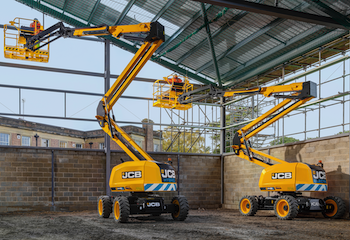 |
|
JCB electric rough-terrain boom lifts can be used through an entire project, from the groundwork to the interior structures, making them a cost-effective choice for renters who need a machine that adapts to changing job requirements. |
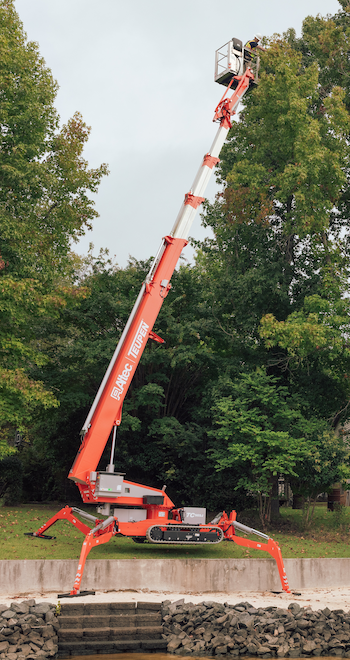 |
|
Altec Teupen products offer many features that can’t be found on other MEWPs, such as auto-leveling outriggers, auto-stow for the platform and the ability to short-span the outriggers for tight job sites. |
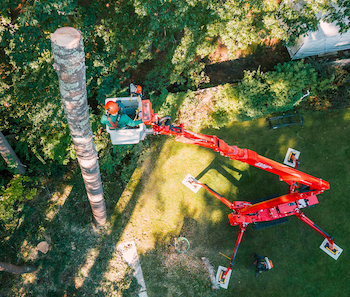 |
|
MEWPs such as the tracked aerial lifts designed by CMC can navigate to areas unreachable in traditional bucket trucks, as well as safely set up on sloped and otherwise challenging terrain. |
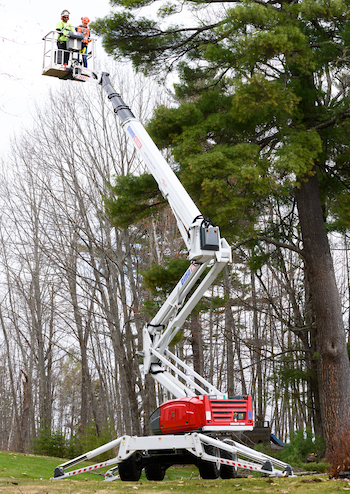 |
|
Specializing in this type of equipment within a given region can make Dinolift rough-terrain MEWP ROI very attractive over boom lifts and scissors where pricing competition is fierce |
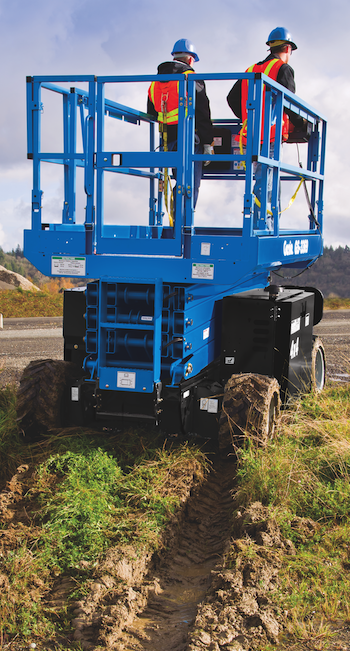 |
|
With four-wheel drive and rough-terrain tire options, Genie MEWPs can traverse environments from rocky and muddy terrain with steep grades to sensitive ground conditions such as sand. |
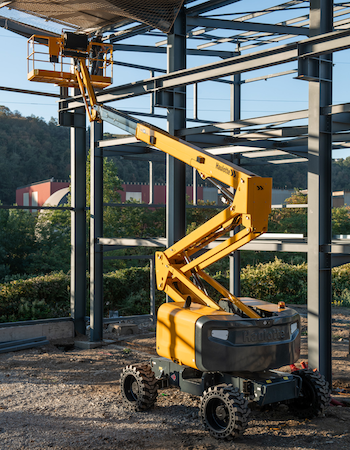 |
|
All Haulotte machines now have a MyCompanion QR code located next to the lower control box that gives operators and technicians instant access to the most important information they need. |
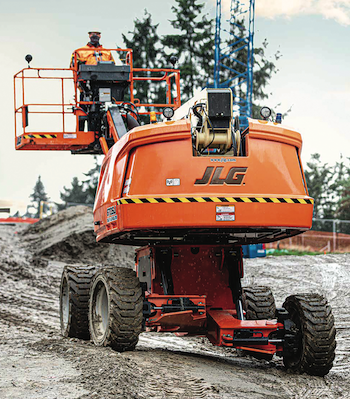 |
|
JLG’s self-leveling technology adjusts the boom lift’s chassis to the ground conditions rather than adjust the machine’s capability to ground conditions. |
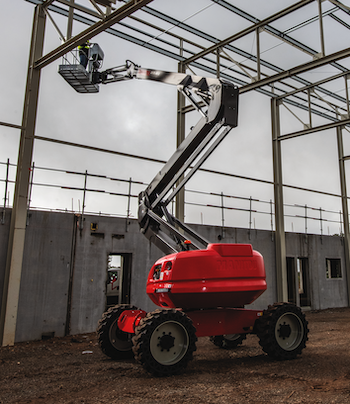 |
|
On the design side of each machine, demand for easy to operate and practical equipment continues to grow and Manitou engineers are focusing on adding capabilities that make movements and work faster and easier. |
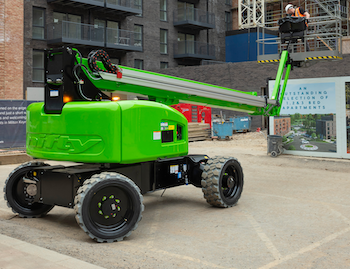 |
|
Niftylift rough-terrain MEWPs, which include diesel and plug-in hybrid-powered options, are all Tier 4 final-compliant and combine powerful 4x4 capabilities with eco-conscious technologies, offering exceptional fuel efficiency and lower emissions, which align with rental centers’ growing focus on sustainability. This combination of performance and eco-conscious design makes them a highly attractive investment. |
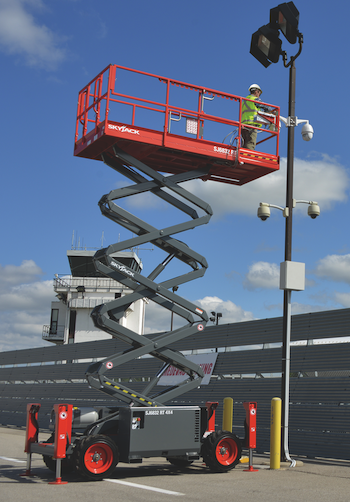 |
| Skyjack RT models offer crossover symmetrical four-wheel drive and industry-leading gradeability at up to 50 percent. |
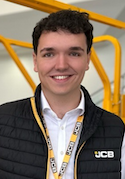 |
|
Connor Stanmore |
Real-time performance and safety monitoring
The greatest attraction of new rough terrain MEWPs to equipment rental centers lies in their versatility and advanced technology. Customers will always have differing requirements and these models open new rental applications as they’re not limited to a single phase of a project.
For example, electric rough terrain boom lifts can be used through an entire project, from the groundwork to the interior structures, making them a cost-effective choice for renters who need a machine that adapts to changing job requirements. This ability to work across different tasks increases rental turnover and adds value to the equipment.
The development and inclusion of automated load sensing and machine-intelligent automation significantly increases safety. These features provide real-time data on load limits, gradients and slew angles and can all be fed back to the operator, preventing unsafe operation. For rental centers, this means fewer risks of accidents, which can reduce liability and ensure that equipment is returned undamaged. Machine intelligence also makes the models easier to operate, minimizing operator error and increasing efficiency on job sites.
Given the nature of rough-terrain machines, the robustness in design reduces damage, therefore lowering maintenance costs and extending the life of the equipment. Rental centers benefit from a lower total cost of ownership as they spend less on repairs and can hire the units for longer without receiving any service calls. The durability makes them a preferred choice for contractors working in challenging and changing environments where the equipment needs to withstand tough conditions while maintaining overall performance.
These advances ensure that new rough-terrain MEWPs remain in high demand, offering rental centers greater versatility, safety and ultimately financial return.
Rental centers rely on their equipment to withstand the harsh conditions of rough-terrain work, from uneven ground to extreme weather. To address this, JCB has focused on designing and developing a machine with reputable parts and protective features that minimize wear and tear. For example, JCB’s rough-terrain booms utilize oscillating axles which gives operators piece of mind that even when on the most uneven ground, there will be no damage to the machine and efficiency will not be impacted.
Additionally, ROI remains a top concern for rental centers and that is why JCB rough-terrain products are built with total cost of ownership in mind. In addition to their durability, JCB machines are designed for ease of maintenance with many modular components that are shared across the full JCB portfolio, simplifying regular servicing and repairs. This decreased downtime keeps rental fleets operational, maximizing the rental center’s profitability. By designing JCB equipment that is durable and safe, rental centers can be confident that their investment in JCB machines will yield strong financial returns over the long term and will be reflected in the residual value of the machines when it comes to resale.
Rental centers can rationalize the purchase of new rough-terrain MEWPs by considering their strong ROI and additional benefits. While tracked MEWPs are an option, they are often prohibitively expensive for many rental centers, limiting utilization and inhibiting profitability. JCB’s rough-terrain MEWPs, on the other hand, can offer all the key benefits, such as stability, safety, power delivery and tractive effort without the large price tag.
By investing in JCB models, rental centers gain durable, easy to maintain machines that lower the total cost of ownership. Additional options such as high-flotation tires and pads reduce any damage to the ground. These factors coupled with the versatility across multiple stages of a project ensure higher utilization rates and therefore faster ROI. JCB’s rough-terrain MEWPs provide an ideal balance of cost effectiveness, performance, serviceability and profitability for rental centers. •
 |
|
Zac Hilliard |
Tracked aerial lifts viable option for all types of jobs
Compact atrium tracked aerial devices such as Altec Teupen modelsoffer many advantages to rental centers. These machines can traverse steep grades and rough terrain, fit through single and double doorways, provide low ground pressure to prevent damage to flooring, and they can access tighter and more challenging job sites than other mobile aerial equipment.
Additionally, the size of Altec Teupen compact atrium tracked aerial devices is traditionally much smaller than other lifts, which makes the equipment easy to transport; and it often doesn’t require a commercial driver’s license to do so.
Teupen products also offer many features that can’t be found on other MEWPs, such as auto-leveling outriggers, auto-stow for the platform and the ability to short-span the outriggers for tight job sites.
Rental equipment can see considerable wear and tear, which makes Altec Teupen products even more appealing. These compact atrium tracked aerial lifts are German-engineered, making them reliable, durable and built to last. Teupen was the first manufacturer of backyard tracked aerial devices and it has been in the industry for more than 40 years, so rental centers can rest assured they’re investing in high-quality equipment that will serve them well.
Rental centers may have limited exposure to Teupen products, which could cause some concerns with serviceability or training. However, Teupen is backed by Altec’s expansive nationwide mobile and service network. Altec Teupen also offers sales, job site inspection and user training to support rental centers and their customers.
Altec Teupen equipment has a great application across multiple industries, which is a big positive for rental centers. This equipment lends itself well to tree care, facilities maintenance, construction, indoor electrical/lighting, painting and many other applications. They’re also able to be rented by a wide variety of customers due to their size and ease of transport. •
 |
|
Lenny Polonski |
Versatility and safety
The greatest attraction/benefit of new rough-terrain MEWP models are their versatility and safety. MEWPs such as the tracked aerial lifts designed by CMC can both navigate to areas unreachable in traditional bucket trucks, as well as safely set up on sloped and otherwise challenging terrain. This is a true game-changer in the sense that these lifts broaden the scope of tasks that workers can undertake with confidence, which translates to greater revenue and profit for rental centers that add CMC lifts to their fleets and the customers who choose to rent them.
Ever-expanding safety features, along with upgraded automation and user-friendly controls continue to elevate the value of these highly adaptable, efficient lifts.
Features such as wireless radio remote controls, automatic self-leveling and automatic turret centering translate to a safer work environment and significantly less potential liability for users or rental companies. CMC lifts represent a fast-growing segment of the rental industry because the positive impact to operational overhead is significant when compared to alternative MEWP options available today.
Any new product that is unknown to the operator, rental center or contractor is going to have some trepidation baked in for the customer. Users familiar with the benefits of spider-type lifts such as those manufactured by CMC already know how easy they are to operate, how these machines’ extremely narrow dimensions and light footprint allow them to access areas other lifts can’t reach, and the greater degrees of safety they provide to operators and support crew. For rental centers who aren’t yet familiar or comfortable with these sorts of lifts, once these considerable upsides have been explained and demonstrated, any concerns that may have initially existed tend to dissipate.
When it comes to CMC tracked aerial lifts, the return on investment is typically significant for rental centers that make these purchases. CMC North America stands behind each of its extensively product-tested CMC models. This equipment has been proven to be reliable and easy to maintain, plus the phone technical support team is just a call away should any problem or question arise. Additionally, CMC is continually adding to its extensive library of how-to/operator familiarization videos to assist in quick starts and easy learning for new users.
With a CMC tracked aerial lift, users are getting a machine that can go places that traditional lifts such as oversized and heavy boom lifts, simply cannot. Additionally, when paired to a truck outfitted with one of CMC’s custom tracked lift truck mounts, a CMC lift becomes two lifts in one, capable of performing as a self-propelled lift and rear-mount forestry bucket truck/rear-mount aerial lift. A CMC tracked lift paired with an under-CDL lift carrier truck can self-unload from the truck chassis via automatic outriggers, drive through a 36-inch gate in seconds, self-level on sloped locations, and then safely reach up to 100 feet in height in less than three minutes. This versatile hybrid functionality maximizes the value and efficiency of a rental center’s existing equipment, while simultaneously eliminating additional investment and upkeep costs.
By choosing CMC, rental centers can save on the number and types of lifts needed for their fleet, which means less initial purchase cost, less maintenance expense, and fewer storage requirements. The positive impact to operational overhead is significant when compared to alternative MEWP options available today. •
 |
|
Teemu Ristelä |
Repeat customers are key to success
By offering rough-terrain models like the Dino RXT Series 4x4 MEWP, rental customers have created new revenue streams for rental centers. Customers are made up of those who use it on a weekly basis and constantly returning customers. They have found it useful for a dedicated task such as tree care jobs.
Specializing in this type of equipment within a given region can make rough-terrain MEWP ROI very attractive over boom lifts and scissors where pricing competition is fierce. Also, when business sector revenue fluctuates due to new construction slowing down, having more customer segments helps level out the slower periods.
With specialized rough-terrain equipment, quantities within a rental fleet being lower compared to boom lifts and scissor lifts, rental centers need a trained specialist for that specific machine type to help customers use all of its capabilities efficiently and maximize customer satisfaction. Training from the manufacturer or manufacturer rep is key for both operation and after-sales support solving issues on the go. All Dinolift rough-terrain lifts are delivered with operator training included and since 2023, Dinolift has implemented MyDino telematics/connectivity as standard feature on all its models. The current status of the Dino equipment is visible to the rental customer, distributor and manufacturer technical support via a mobile app. Solving customers problems remotely is a key in minimizing downtime and helps the distributor or manufacturer to walk the operator though any concerns they might encounter during use.
Depending on application, we´ve seen very competitive ROI and rental centers are experiencing great customer satisfaction with rough-terrain MEWPs. Customer engagement and repeat customer rentals for the rough-terrain MEWP have been on a very high level. Rental centers should consider rough-terrain models because they can serve a wide variety of applications; enough so that rental centers can easily justify purchasing one or more units. The can be used on a variety of jobs. Rental customers benefit from having the freedom of not owning that specific equipment, even if they renting it on a regular basis. •
 |
|
Dominik Damm |
Built for extreme conditions
Rough terrain MEWPs are designed to work productively in a wide range of extreme conditions. With four-wheel drive and rough-terrain tire options, these MEWPs can traverse environments from rocky and muddy terrain with steep grades to sensitive ground conditions such as sand. That can perform in frigid environments like the Arctic Circle to corrosive locations like the Gulf of Mexico oil rigs or beachside in Miami. The greatest attraction of rough-terrain MEWPs is their versatility.
As a manufacturer, Genie designs rough-terrain solutions to meet that need. This includes machines with enhanced capabilities, like the Genie family of rough-terrain RT scissor lifts and heavy-lifting Xtra Capacity boom lifts. Genie also offers tailored solutions that include High-Float tires, Hostile Environment package, and next-generation TraX track system, which was introduced at the ARA Show last Febuary.
TraX provides four independent tracks that ensure smooth break-over on rough terrain. Oscillating axles and the ability to swivel up and down by 22 degrees enable the tracks to grip and climb over obstacles in the most extreme working conditions. Genie TraX systems offer an average of 72 percent less contact pressure compared with standard tire options due to their broader weight distribution.
Because the TraX system comes in two sizes — a small frame for S-40 XC and S-45 XC machines and a large frame for S-65 XC, Z-62/40, and S-80 J lifts, rental centers have a range of machines they can pick from to match their customers’ needs, including the S-80 J TraX, which is the highest-reaching tracked boom in the industry.
Genie’s responsibility as a manufacturer is to design machines that can last in rough environments with minimal downtime. Genie accomplishes this by ensuring it has a robust customer support system ready to respond to customers’ calls and help them troubleshoot any problems they might have. By listening and using customer feedback to continuously improve Genie model designs, it can offer models that meet customer needs.
While every dollar matters to rental center customers, there is more for rental centers to consider than simply the initial price. Adding rough-terrain capabilities to MEWPs typically adds to acquisition price but results in a better utilization rate. The average life cycle for a rental center is six to eight years for a machine, which is a long time to deploy an asset and recover the difference in initial purchase price. New industry requirements will emerge, job applications can change and operators will continue to want a single machine solution.
Purchasing the rough-terrain MEWP is a hedge. They cover the widest range of applications today, and tomorrow. Their versatility helps maximize utilization throughout the life of the machine, which is why it’s important to choose a quality machine and manufacturer to minimize downtime so the machine is ready for rent when the opportunity arises. •
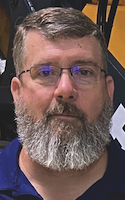 |
| Paul Jensen Product Marketing Manager Haulotte |
On-machine diagnostics
Haulotte’s newest rough-terrain MEWP models are the safest, most efficient machines that Haulotte has ever built. The HA61 RTJ PRO rough-terrain boom lift is the most recent update to an already popular machine.
To reduce machine emissions and make maintenance simpler, a new 24 horsepower engine has been paired with a four-wheel-drive mechanical axle, eliminating 30 percent of the hydraulic hoses of the previous machine while still delivering all the rough-terrain performance needed for today’s job sites.
The dual zone platform weight capacity now includes a dual zone tilt allowance. When working in the restricted zone, the machine tilt capacity increases from 4 to 6 degrees, reducing the temptation to use unsafe practices like cribbing when working on slopes.
Customers are looking for safe and reliable machines that have the lowest down times possible. Haulotte is supporting that need with a suite of digital products that are helping owners, operators and technicians. The Haulotte Activ’Screen is leading the industry with diagnostic and configuration tools located right on the machine and therefore no diagnostic tool is required. Technicians are given plain-text information about trouble codes as well as drawings locating the parts that are affected, and instructions on how to return the machine to service as quickly as possible.
Sherpal, Haulotte’s telematics solution, builds on the data presented on the Activ’Screen and transmits all the same machine status and diagnostics information to the cloud for easy access and analysis either on the MyHaulotte.com web platform or the customer’s ERP. Fleet managers can quickly see the location and health of their connected machines and plan for effective technician visits when needed.
Haulotte digital tools keep operators informed about machine status, reduce downtime with onboard rapid diagnostic tools and reduce total cost of operation (TCO) with effective fleet management and analysis tools.
Haulotte is working to help operators and technicians work as safely and independently as possible. All Haulotte machines now have a MyCompanion QR code located next to the lower control box that gives operators and technicians instant access to the most important information they need. When they click on the QR code, they are taken to the landing page for that specific machine with access to manuals and videos that they need to safely and effectively complete their job. In addition to the standard operator manual and spare parts catalog, there are videos showing how to operate the machine. A novice machine operator may forget certain steps during the training they receive at the rental store.
Knowing there’s a video overview to reinforce that training makes operators more confident, safer and less likely to call the rental store to ask questions. For additional safety, the online dashboard will help the operator document a complete visual inspection of the machine before operation begins and weather conditions for the local area are shown, preventing the operator having to guess what the wind conditions are on the job site.
To understand the value that Haulotte brings to business partners, remember that Haulotte looks at a bigger picture than just the difference between the acquisition price and the residual value when the machine leaves the fleet. With a whole-machine approach to value calculation, Haulotte works to support our customers.
Haulotte personnel are building new digital solutions that will make operators and technicians more efficient and independent. Haulotte continues to update machines with more fuel-efficient engines and fewer hydraulic hoses. Sherpal telematics helps predict, manage, and reduce repair times and costs. With maintenance in mind, Haulotte engineers are separating electric cables and hydraulic hoses to make repairs easier. Carefully routing hoses to prevent chafing helps reduce costs and speed repairs.
Fasteners and pivot pins used on Haulotte machines are coated to prevent corrosion so machines look clean and well maintained as long as possible so operators feel confident in the safety of the machine.
All Haulotte diesel-powered machines feature Haulotte Stop Emissions System that automatically eliminates engine idling after 90 seconds, reducing machine hours by up to 20 percent and reducing noise and overall emissions on the job site. •
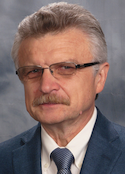 |
|
Ignacy Puszkiewicz |
Next-generation machines purpose-built for jobs
Access equipment designs are going through a significant transformation. This new generation of machines looks and operates very differently. It’s no longer about general specification updates for rental centers and their customers. It’s about finding a combination of innovation with technology to solve the renters’ most common job site challenges, like working on uneven or inclined terrain.
An aerial lift with a traditional oscillating axle can be challenging to use in many applications and working environments because these machines are only rated to work on firm surfaces with 5 degrees or less of grade; most job sites aren’t that flat.
“Smarter” chassis technologies for rough-terrain MEWPs will benefit applications on undeveloped surfaces and work on improved surfaces where infrastructure is already established. This type of ground-level technology could save significant time and money because it would eliminate the need for excessive, costly job site preparation such as grading work to level surfaces. It also eliminates the need for cribbing so these machines can be used on more types of job sites. The technology allows machines to work closer to buildings with less positioning while providing operators with a more comfortable, stable feeling when operating in rugged conditions. Variable-tilt and self-leveling technologies are designed to adjust a machine’s capability under certain conditions to the ground or surface being worked on.
With variable tilt, under certain conditions, stowed scissor lifts can automatically level on a side slope up to five degrees and driving at full height. This is especially beneficial when renters need to work at height along the outside of a building that has been graded for drainage at a consistent slope. This technology offers significant time savings.
Self-leveling technology adjusts the boom lift’s chassis to the ground conditions rather than adjust the machine’s capability to ground conditions. Boom lifts are often used because operators want mobility when working at height. This means these types of rough-terrain MEWPs are not equipped with outriggers, which enhance machine stability, especially when working in challenging ground conditions. With self-leveling technology, the machine levels itself automatically in all directions at all times, even when driving the unit elevated. With this technology, the machine’s control system assures that all four wheels are in constant contact with the ground, improving the machine’s traction on rugged terrain. The benefits:
- Operators and occupants will feel more stable during travel due to less bouncing of the unit while traversing rough or uneven terrain.
- Improves machine traction.
- Reduces the need to crib and/or grade the work area and eliminates the trial and effort of repositioning to find level ground.
As the adoption of new technologies that improve operations’ efficiency and safety continues to gain momentum in the access industry, rental centers want to make sure that these machines adhere to the current industry standards.
For example, in North America, these machines are now required to have load-sensing capabilities, which actively monitor loads, sounds an alarm and interrupts normal operations if overloaded. They must also have a tilt sensor system that will alarm, as well as disable, boom and drive functions if the incline surpasses the slope limit. Changes like load sensing and tilt sensing require operators to do more advanced planning of work at height to make sure that it’s possible to complete with compliant equipment.
With traditional equipment, this means that operators will need to carefully consider the application when choosing a MEWP for the job, but with JLG rough-terrain machines that have “smart” chassis technology, renters will be more easily able to complete the work without extra pre-planning.
Access OEMs have all worked to overcome traditional machine limitations in different ways. Some OEMs have focused on developing products that reach further and higher, while others have advanced the machine’s control system technology to enable the equipment to work on steeper slopes. JLG team members believe that the access industry’s future will be practical technology solutions nearer to ground level, focusing on developing the concept of a smarter chassis.
Rental centers can rationalize purchasing rough-terrain MEWPs with smarter chassis technologies because these types of machines benefit not only general construction applications on undeveloped surfaces but also work on improved surfaces where infrastructure is already established. Technology can help renters working in city centers who want to get closer to buildings but can’t because of the difference in height between the streets, curbs and sidewalks. •
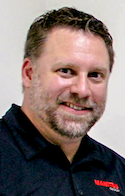 |
| Brian Rabe Product Marketing Manager Manitou |
Keep a strong eye on ROI
Rental businesses continue to be on the cutting edge of technology by closely monitoring total cost of ownership of their fleets using the new machine features and data available from the machine. Manitou offers standard telematics and six years of connectivity to the My Manitou app. The shared data continues the trend of rental businesses paying close attention to the total cost of ownership. Rental business owners continue to sharpen their pencils to understand the correlation between utilization and operating costs as it relates to immediate ROI, and then taking a look at the retained/resale value of that asset.
The days of buying the lowest cost/simplest tool are passing in the rental industry. Customers and businesses are placing a higher importance on the value to income ratio. There is still a focus on ease of operation, but rental centers are embracing added features as well as it relates to the long-term value of that machine.
As one of the newest manufacturers in the North American market, Manitou is delivering this through a targeted focus on innovation, ease of serviceability, extended service intervals and other technologies focused on uptime. Manitou’s standard telematics helps service technicians identify what is wrong before even seeing the machine, helping reduce repair costs and return trips.
Another important adaptation in the machine development process is electrification. There are many comparable diesel and electric models in the Manitou line that offer seamless performance in either configuration. Working in regions with incentives or requirements for electric equipment or in applications with majority indoor work, an electrified machine can pay big dividends. However, some applications where construction contractors do not have access to electricity make diesel models the preferred power choice.
Everything comes down to utilization, and that comes down to versatility for any product in a rental fleet. MEWPs are different than other equipment in that you must have the right size, capacity and machine type to ensure that job site versatility is maintained. The majority of the Manitou MEWPs are available with welding packages, which includes hose protection, high-performance generators and high-capacity baskets that can safely accommodate a welder. Generators also are in higher demand and are critical to power tools that require more power than just a battery pack.
Rental centers report that many contractors request Manitou machines with 4-wheel steering. Switchable 2-wheel steer, 4-wheel steer and crab steer allow them to position the machine in the perfect spot the first time. This results in huge time savings on restricted job sites.
Demand for easily adaptable glazer kits for hauling glass and windows, as well as pipe cradles, continue to grow in demand. Demand for new accessories that expand utilization continue to grow and Manitou continues to develop more options in tight coordination with end user needs.
On the design side of each machine, demand for easy to operate and practical equipment continues to grow. Manitou engineers are focusing on adding capabilities that make movements and work faster and easier. Whether that’s smooth multifunction control and operation thanks to joystick controls and hydraulics, or off-roading capabilities for working on job sites of all terrain types, people are seeing how they can save time each day and expand their capabilities with more versatile work platforms.
While 2024 has proven more volatile than people expected, the overall trajectory of the rental industry remains solid. The demand for rental equipment remains strong. In a world where customers are unsure of adding the carrying costs of new equipment to their own fleets, the equipment that rental centers offer becomes significantly more important. Rental businesses can invest with confidence, as long as they have done the research into the types of equipment that is in demand in their market.
Fortunately, MEWPs are in universal demand through all phases of construction and many regions continue to experience growth. As manufacturers focus on delivering versatility and increased utilization, as well as new designs dedicated to lowering the total cost of ownership, business owners should be able to invest in MEWPs with confidence knowing that they will achieve a good ROI and greater value throughout the life of the machine. •
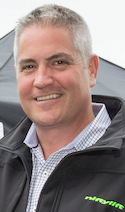 |
|
Jon Hedlund |
Performance + eco-friendly design = attractive investment
The main appeal of Niftylift rough-terrain MEWP models for equipment rental centers lies in their enhanced versatility, reliability and productivity in challenging environments. Rental centers value Niftylift rough-terrain MEWPs for their robust performance on uneven ground, ability to navigate tough outdoor conditions and advanced safety features that ensure smooth and safe operation.
Niftylift rough-terrain MEWPs, which include diesel and plug-in hybrid-powered options, are all Tier 4 final-compliant and combine powerful 4x4 capabilities with eco-conscious technologies, offering exceptional fuel efficiency and lower emissions, which align with rental centers’ growing focus on sustainability. This combination of performance and eco-conscious design makes them a highly attractive investment.
This enables rental centers to make inroads with hospitals, colleges, airports and convention halls, for example, in addition to construction and arbor care. Choosing sustainable options for these projects is often mandated by governing boards with purchasing authority.
Rental centers often express concerns related to maintenance, durability and overall cost of ownership. Niftylift rough-terrain MEWPs feature simple yet highly durable designs, using fewer moving parts to reduce maintenance costs and minimize downtime. In addition, Niftylift’s dedicated service support team, backed up by an extensive nationwide support network, ensures that any servicing needs are met promptly, reducing the impact on rental companies’ equipment availability.
Low-weight designs also represent a change in rental centers’ perceptions. A low-weight engineering focus has practical benefits, such as fuel efficiency, reduced emissions, easier transport and lower operational costs without compromising strength and performance. This is crucial in markets where sturdiness and durability are prioritized. They also cause less wear and tear on job sites.
Rental centers can rationalize the purchase of new rough-terrain MEWP models by focusing on the long-term ROI. Niftylift MEWPs are engineered for longevity and reduced operating costs, ensuring high uptime, which is a crucial factor for rental centers.
Hybrid models offer savings on fuel while meeting emissions standards, which can be a significant selling point for eco-conscious end users. Additionally, by investing in state-of-the-art, versatile equipment like Niftylift models, rental centers can expand their customer base, cater to more projects, and ultimately increase rental rates. These factors combined — lower operational costs, increased market demand, and premium rental rates — lead to a strong return on investment over the life of the machine.
Aerial work platform customers are driving change in the market, and once customers try these new designs, they don’t want to go back. Niftylift is carving a piece of the market based on innovation and sustainability and it’s helping rental partners meet new and surging demand. •
 |
|
Malcolm Early |
Parts commonality helps reduce costs
Rough terrain MEWPs are perfect for jobs that require machines to navigate work on uneven and rough landscapes. These lifts are popular for applications like building and structure maintenance, exterior finishing, landscaping, outdoor construction, mining, quarry work and outdoor events and festivals.
Typically, rough terrain MEWPs have larger workspaces and higher weight capacities. Skyjack offers working heights spanning from 32 to 70 feet with capacities from 1,250 to 2,750 pounds.
Rough terrain lifts feature robust features. Skyjack RT models offer crossover symmetrical four-wheel drive and gradeability at up to 50 percent. Independent auto-leveling outriggers level the machine on uneven terrain for work in rough job site conditions.
Balancing machine durability with maneuverability and accessibility can be a concern with rough-terrain MEWPs. To address this, Skyjack designed its rough-terrain scissor lifts to use a unique full symmetrical crossover 4-wheel drive system, providing best possible positive traction, even with one wheel off the ground. Class-leading terrainability with up to 50 percent gradeability is paired with a 60-inch inside turn radius for excellent job site maneuverability.
Skyjack’s unique clevis-style design creates scissor ends that endure lower stress and increased rigidity for operator comfort while working at height. Features include heavy-duty steel tube scissor arms with welded cross member bracing, zinc-plated pivot pins to minimize corrosion, long-life dry bushings that eliminate the need for lubrication, and trunnion-mounted lift cylinders allow quick removal.
Uptime and ease of maintenance is also a valid concern to address. With Skyjack RTs, all components are located inside individual swing-up steel cabinets that provide protection but still allow ease of accessibility to engine, tanks and all major components.
ROI is a significant factor to consider when purchasing a rough-terrain MEWP. Skyjack became an industry leader by providing machine features that combine durability, quality and serviceability, making Skyjack products renowned for product reliability.
The Skyjack team understands the importance of maximum uptime, so Skyjack equipment is designed to provide just that. All major service points are easily accessible, enabling straight-forward troubleshooting and repairs.
With the aim of keeping cost of ownership down, the SJ9664 RT, for example, features an axle-based four-wheel drive, commonality of parts throughout the range, and attention to accessibility for service. Solid rubber tires provide a damage-resistant alternative for enhanced protection, while auto-leveling outriggers allow for use in rough conditions. •
This article originally appeared in the November December 2024 issue of Pro Contractor Rentals magazine, ©2024 Urbain Coomunications LLC. All rights reserved.








